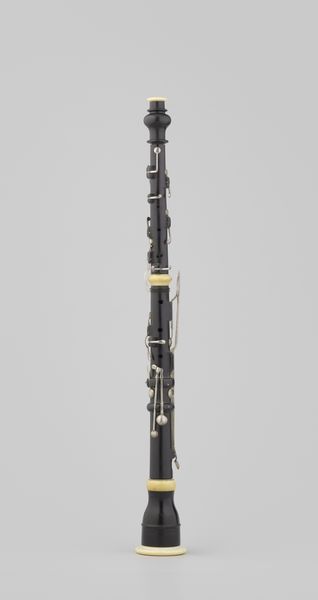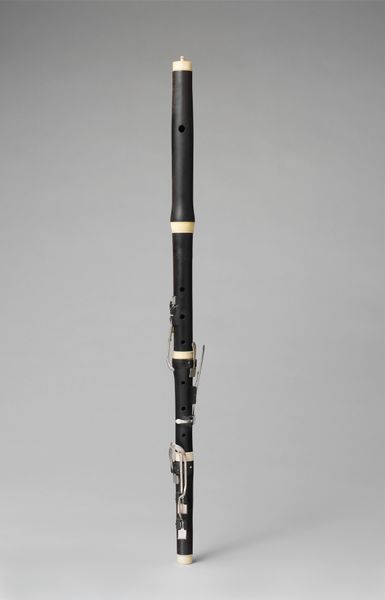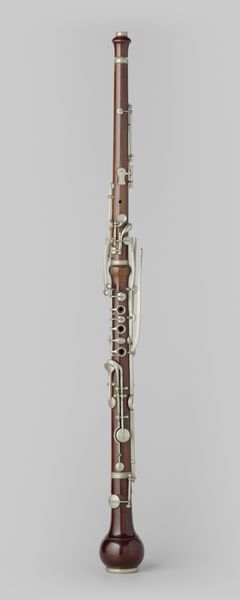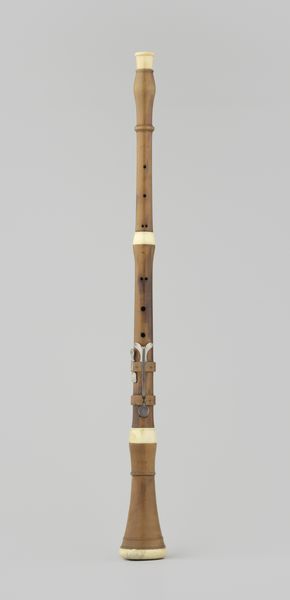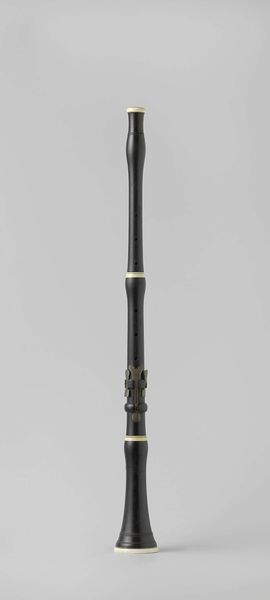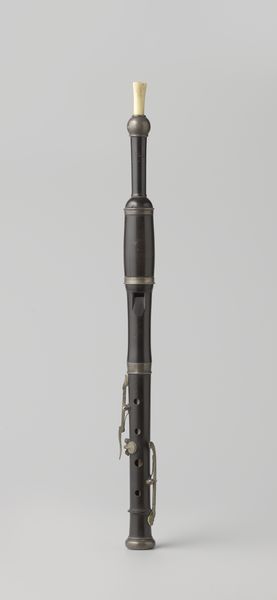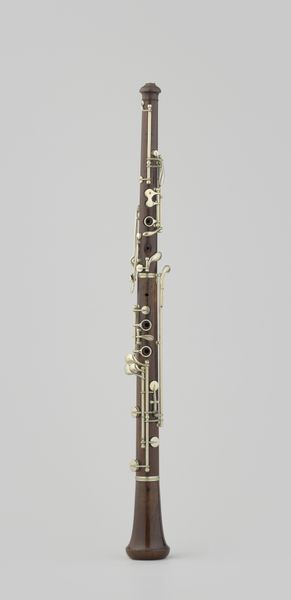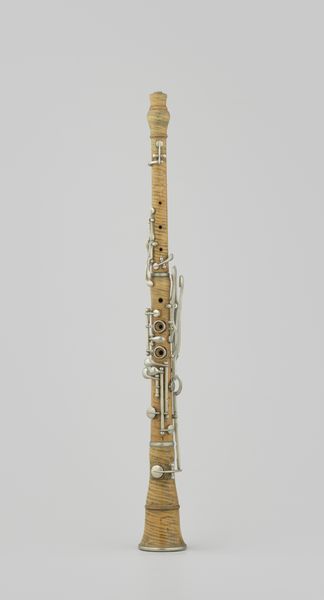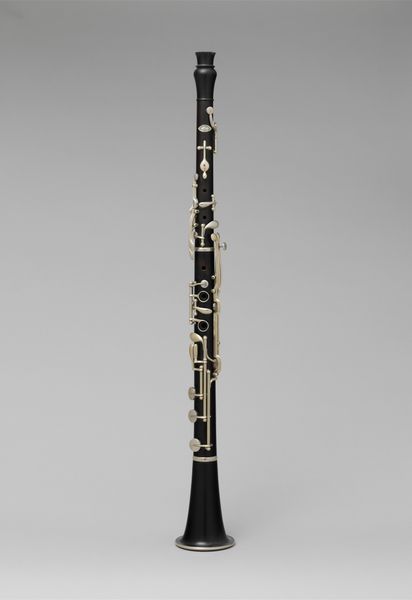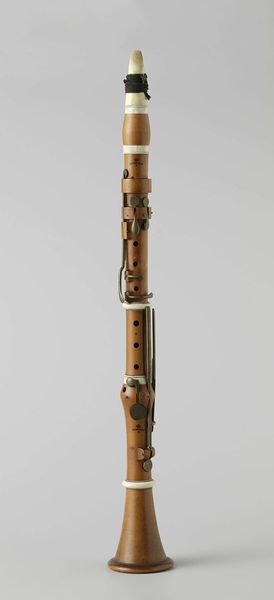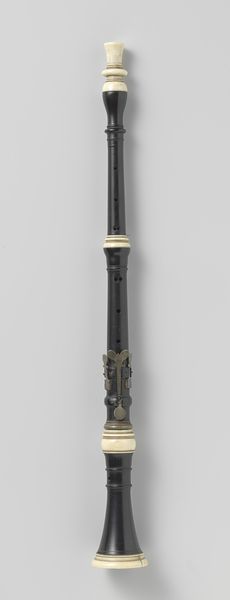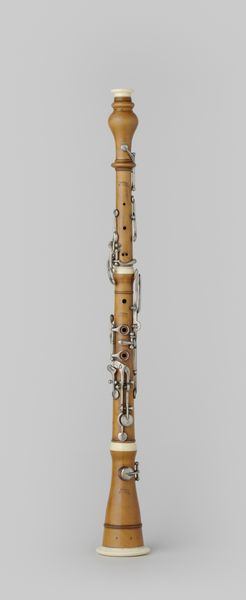
metal, wood
#
metal
#
wood
#
musical-instrument
Dimensions: length 56 cm, diameter 5.7 cm, diameter 1.9 cm, length 29.5 cm, width 14 cm, depth 8.5 cm
Copyright: Rijks Museum: Open Domain
Editor: Here we have an oboe, complete with its original case, crafted around 1840 by Guillaume Triébert. The gleaming metal keys and dark wood give it such a striking appearance, almost sculptural. What story do you see within the materials of this instrument? Curator: Think about the sourcing and processing of the wood, perhaps ebony. Its density affected the sound quality Triébert sought. And the metal—what alloys were used, and how were they worked to create the keys? Each material represents a different stage in a complex production process involving specialized labor. Editor: So it's not just about the finished product, but the labor and the methods used? Curator: Precisely! Who had access to these materials, and who possessed the skills to transform them? Oboes of this era were not mass-produced; they represent the culmination of craftmanship and often cater to wealthy patrons or professional musicians. What can the evolution of the keys and the design of the case tell us about the standardization, commercialization, and dissemination of music? Editor: That shifts my perspective quite a bit. I was focused on the aesthetic, the sleekness of the lines, and hadn’t considered the economic factors. The value placed on musical expression and the artisan's skill are embedded in the object itself. Curator: It encourages us to move away from celebrating pure artistry, and toward celebrating human-crafted production in a specific social and historical setting. We gain a better understanding of both music's function and value in society, as well as who possessed the resources to support and participate in musical endeavors. Editor: I'll certainly be looking at everyday objects differently from now on. Thank you! Curator: Indeed, understanding the social context of an art's production brings us to another level of appreciation.
Comments
No comments
Be the first to comment and join the conversation on the ultimate creative platform.
